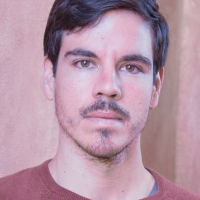Taleesha Bowrin first saw a little light at the end of the tunnel in 2014. She was out of work, without a college degree, struggling to find a permanent home and trying to raise a young son outside her relationship with his abusive father. Living in New York, one of the most expensive cities in the world, didn’t help.
“You don’t know what you’re capable of until someone else’s life is on the line,” she says. “Skating by with earning the bare minimum for bills and rent isn’t enough when you’re raising a toddler.”
She found opportunity through a new youth employment program that was rolled out by JobsFirstNYC, a nonprofit started in 2006 with philanthropic funds. The Young Adult Sectoral Employment Project (YASEP) pairs community development organizations with employers to give good-paying, career-worthy jobs to young people between 18 and 24 years old.
The program itself was started up in 2013 as a three-year pilot that gave $50,000 grants to five workforce partnerships. Those five partnerships built their strategies around specific industries that were thriving in the city, and could offer unemployed youth the chance to climb up a career ladder with jobs that fulfill and challenge.
But potential industry growth wasn’t the only prerequisite, says Keri A. Faulhaber, of JobsFirstNYC. “We needed sectors or jobs that were friendly for that population of 18- to 24-year-olds coming out of underserved areas,” she says.
They convened local community organizations, employers and training providers like community colleges in New York City to gauge their interest in webbing their services together for YASEP. Then they opened the door to proposals for grants and received 15. The five grantees selected focused on the technology sector, hospitality, foodservice and retail, healthcare, and transportation and logistics.
Market researchers were then hired on to do a deep dive into city data and compile a report on the current job market for 18- to 24-year-olds in each of those sectors, and the challenges they faced accessing steady-paying work.
Taleesha Bowrin benefited from a partnership between the Cypress Hills Local Development Corporation and the Total Transportation Corporation, among other employers. Through that cooperation, she was able to get her commercial driver’s license and work as a driver for the city’s Metropolitan Transportation Authority.
The great thing about the JobsFirstNYC programs, though, is that they also help young participants outside the workplace when a paycheck isn’t enough. “A lot of times employers will support a person until they get the job, but in what’s called the sectoral employment strategies” — this specific approach to workforce development that builds bridges between industries, employers and non-profits — “they keep supporting the worker to help them stay on the job,” says Faulhaber.
For Bowrin, that meant conquering her next major hurdle: finding her and her son an affordable, permanent place to live. “My son and I couch surfed between my mother’s home and my sister’s, and we didn’t have stable housing,” she remembers. “I reached out to an apartment management company who helped me out, only to find out later on that it had an affiliation with” the jobs program that helped her get a job.
In New York, people under the age of 35 are three times more likely to be unemployed than people over that age. And even as the city’s housing prices rise and affluence is increasingly the norm, the rate of low-income youth is remarkably high. Central Harlem and Bedford-Stuyvesant, for example, are neighbors to some of the wealthiest real estate locales in the city, yet 33 percent of youth are out of school and unemployed in those areas.
But Faulhaber says the first phase of her program was met with resounding support from those involved. As of year end 2016, the YASEP program has put 819 unemployed youth through one of its five partnership programs — 554 of which have gone on to secure jobs in the careers they trained for.
And while they’re still crunching numbers to paint the full picture of how the program impacted both employers and the lives of young people, Faulhaber says that overall it was so successful that in early 2016 it got approved to run for another three years.
To her, the key has been helping industry connect with the city and nonprofits in a way that also helps them see that investing in long-term careers is a solid return on investment — for everyone involved.
“They’re all changing the way they work, while launching these new programs and seeing what it means to connect young people to meaningful employment,” she says. “Because improving job quality for these youth has been the ultimate goal.”
And with those improved jobs comes more improved lives for Bowrin and her peers.
“I have my own apartment now and a full-time job located five minutes from my son’s daycare. I can afford to give him a lot. The two of us go on vacations. I’m building the home and the sense of normalcy that I always wanted for him,” she says.
The Equity Factor is made possible with the support of the Surdna Foundation.

Johnny Magdaleno is a journalist, writer and photographer. His writing and photographs have been published by The Guardian, Al Jazeera, NPR, Newsweek, VICE News, the Huffington Post, the Christian Science Monitor and others. He was the 2016-2017 equitable cities fellow at Next City.

















